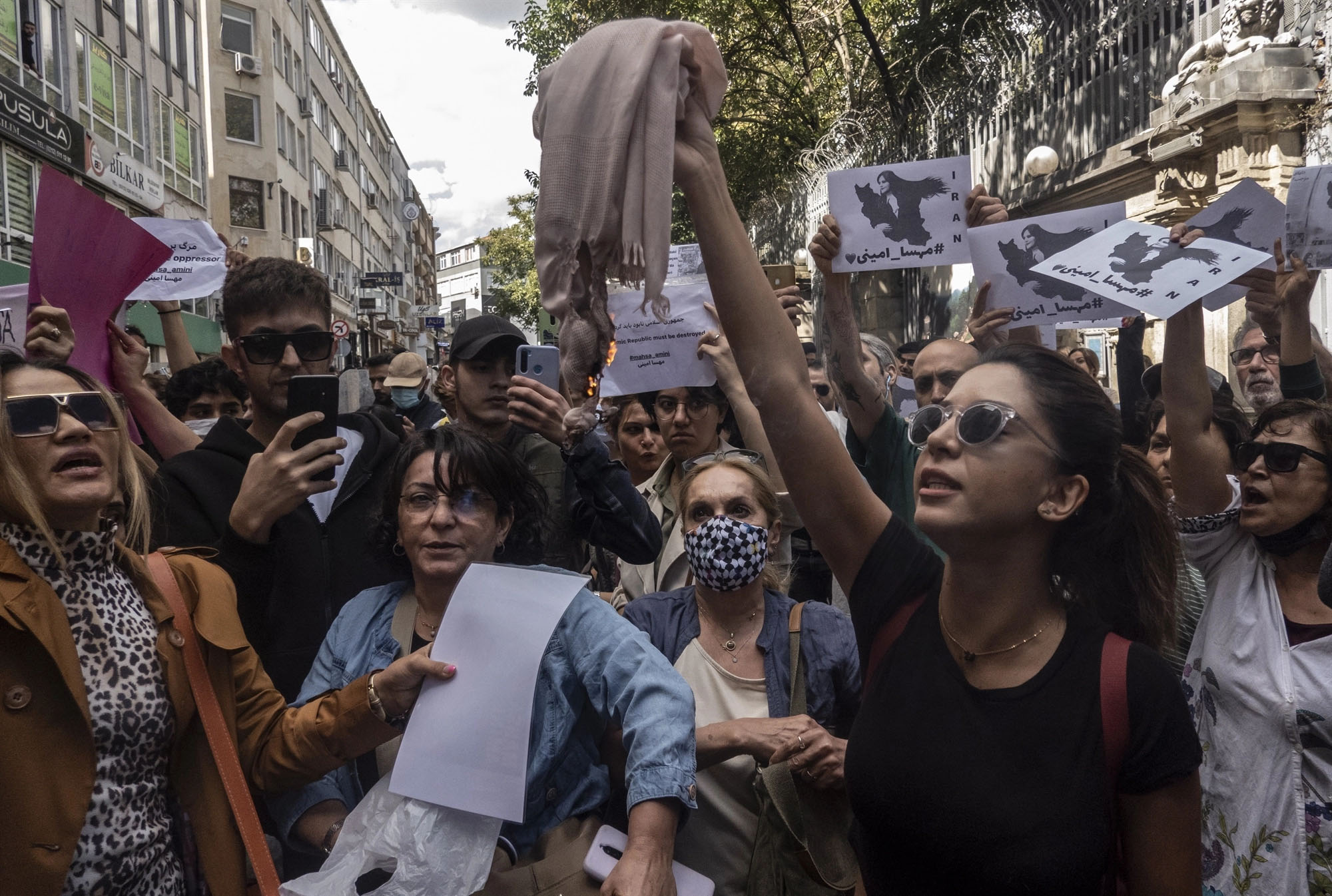
Kathimerini Greece Newsroom
Surrounded by a crowd chanting slogans, a woman picks up a pair of scissors and cuts off her ponytail, revealing her head. In a sea of people, many of them men, neither a hijab nor a headscarf is visible. The woman raises her fist in the air in protest and the crowd erupts in cheers. It is a powerful act of resistance in the Iranian city of Kerman, where women are required to wear a headscarf in public places.
The video released on social media is just one snapshot of the numerous demonstrations protesting the death of a young woman who was arrested by the Islamic police and died in dubious circumstances. The death of the 22-year-old, Kurdish-born Mahsa Amini came at a time when the theocratic regime was worried about the possibility of a popular uprising. Three deaths have already been reported, with humanitarian organizations claiming seven deaths during the latest marches. The demonstrations in the Iranian capital, which show no sign of abating, have so far been peaceful. In the Kurdish areas of the country, however, they have turned violent. The prosecutor in the western city of Kermanshah said two people were killed during "riots". The official IRNA news agency reported that an assistant police officer died and four other people were injured in Shiraz, in southwestern Iran. On Tuesday, a 23-year-old woman and a 16-year-old boy were killed in Urmia and Piransahar respectively, according to a Kurdish humanitarian organization documenting violations against the community in Iran, which brings the total number of dead to seven.

Numerous protests have erupted in Iran over the death of a young woman who was arrested by the Islamic police and died under dubious circumstances. [EPA/ERDEM SAHIN]
The images of the 22-year-old woman's arrest were a reminder that the Iranian state systematically uses violence against citizens who challenge it.
There are signs that an anti-establishment movement is being born, and it is the first of its kind since 2009 when the death of another young woman sparked days of unrest unprecedented since the 1979 Islamic Revolution. Then Neda Agha Soltan was shot by a sniper during an anti-government demonstration and became a symbol of popular discontent at the way women are treated in the country. The protests that followed exposed the fragility of the regime. The images of Amini being forcibly transferred last Thursday to a van of the 'morality police', who arrested her for not wearing a hijab, evoked memories of Soltan's death and reminded us that the Iranian state systematically uses violence against citizens who challenge it.
The decade between the two incidents was marked by increasing repression. Activists have been marginalized and the state itself has suppressed any trace of the 'green revolution' of 2009, following the disputed presidential elections. The paramilitary volunteers of the Basiji unit, created under Ayatollah Khomeini in 1979, were responsible for the death of Soltan and the Revolutionary Guards, who practice the values of the Islamic Revolution, patrol the streets and their presence has been more pronounced since the election of hardliner Ibrahim Raisi to the presidency last August. Yesterday, from the UN podium, Raisi avoided mentioning the incident and the violent incidents sweeping the country. The country's religious leader, Ayatollah Khamenei, was also silent in his second speech yesterday, following reports in the New York Times that he was seriously ill.
































